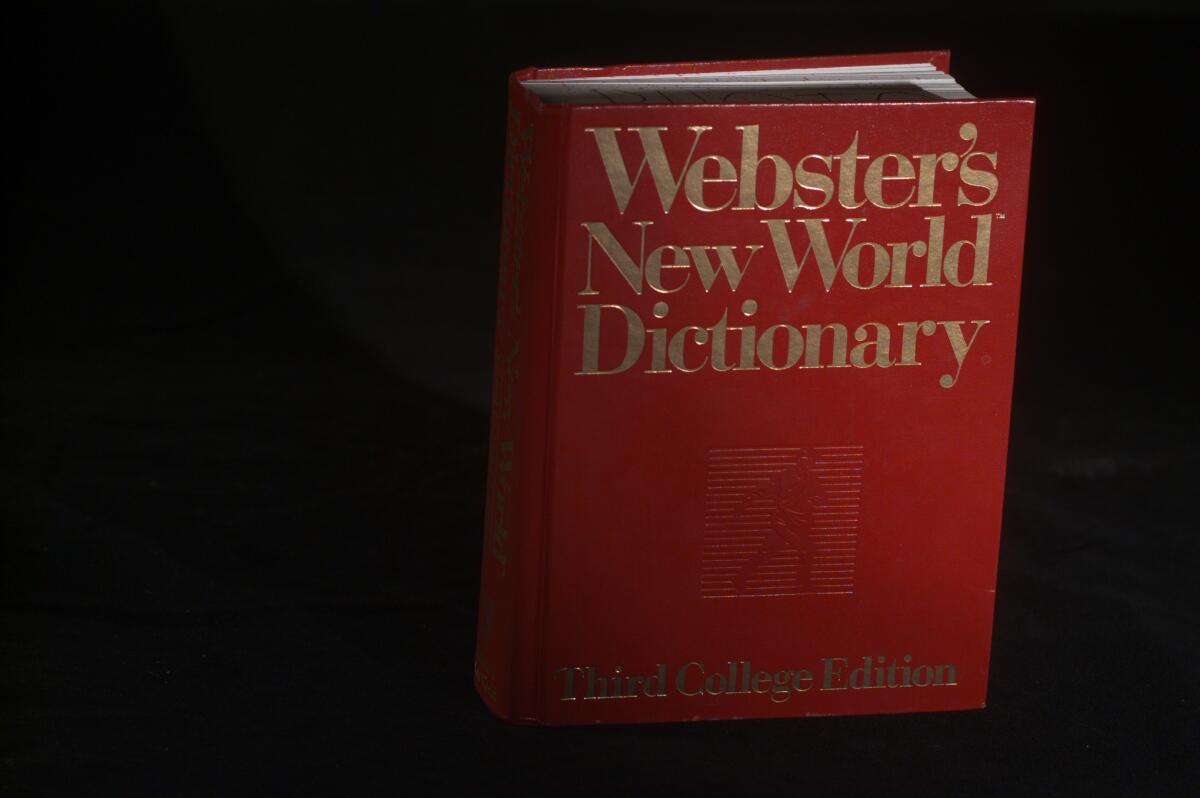A Word, Please: Though disputed among authorities, ‘between’ can work outside pairings of two

- Share via
Can two people talk among themselves? Can three people have disagreements between them?
According to some of the more strict language authorities, no. That’s not how “among” and “between” work. But in the real world, the definitions are more forgiving.
Let’s start with this rule for publishers explained in the Chicago Manual of Style: “‘Between’ indicates one-to-one relationships (between you and me). ‘Among’ indicates undefined or collective relationships (honor among thieves).”
What if you have one-on-one activities within a group of more than two? For example, when you’re talking about pairs of member countries of the European Union that trade with each other? The Chicago Manual says “between” works in these situations because you’re still talking about one-on-one exchanges: “‘Between’ has long been recognized as being perfectly appropriate for more than two objects if multiple one-to-one relationships are understood from the context (trade between members of the European Union).”
The equally influential Associated Press Stylebook has the same rule: “The maxim that ‘between’ introduces two items and ‘among’ introduces more than two covers most questions about how to use these words: ‘The choice is between fish and tofu. The funds were divided among Ford, Carter and McCarthy.’” AP agrees that one-on-one relationships within larger groups get “between,” as well: “‘Between’ is the correct word when expressing the relationships of three or more items considered one pair at a time: ‘The games between the Yankees, Phillies and Mets have been rollicking ones.’”
As far as anyone can tell, this rule dates back to 1851 when the “Grammar of English Grammars” (not published, as far as I know, by the Department of Redundancy Department) by a language expert named Goold Brown, insisted that “between” used for more than two people or things “is a misapplication of the word ‘between,’ which cannot have reference to more than two.”
Other grammar authors followed Brown’s lead, and the idea caught hold that you can never say, as Jane Austen did: “This, of course, is between our three discreet selves.”
There’s no set grammar rule on whether the coming Thursday is next Thursday, this Thursday or just Thursday.
Which authorities did Brown and the others base their rule on? None, as far as linguists can tell. In fact, it seems these restrictive grammarians were laying down the law in open defiance of the grammar experts who came before them, most notably one Noah Webster, who wrote in his 1828 definition of “between”: “We observe that ‘between’ is not restricted to two.”
Today’s style guides seem to have fallen under the spell of the 1850s disrupters and not the old-timers like Webster. But for us regular folks who just want to use the language well, it’s good to remember that AP and the Chicago Manual aren’t rule books. They’re style guides, so they apply only to publishers following that style. For everyday people, a good dictionary works fine.
Merriam-Webster’s Collegiate Dictionary says that while “between” is “especially appropriate to denote one-on-one relationships,” the idea that it only applies to groups of two is “unfounded.” It’s fine, this dictionary says, to use it for more than two things, as in “between you, me and the lamppost.” Merriam’s adds that “between” also works for unspecified numbers, as in “cooperation between nations,” and even “when only one item is mentioned (but repetition is implied): ‘pausing between every sentence to rap the floor.’”
Merriam’s warns that if you try too hard to please the old-school grammarians, you can end up with bad sentences like: “The author alternates among mod slang, clichés and quotes from literary giants.” Obviously, “between” would be better here.
“Among,” Merriam’s says, is more appropriate where the emphasis is on distribution rather than individual relationships: “discontent among the peasants.”
Finally, if you’ve been wondering about “amongst,” my advice and that of other editors and publishers is to avoid it when you can. Merriam’s dictionary says, “‘amongst’ can be used in place of ‘among’ if you want to sound fancy.” But that’s a bad idea if you want to keep your reader focused on your message and not your fancy, fancy words.
June Casagrande is the author of “The Joy of Syntax: A Simple Guide to All the Grammar You Know You Should Know.”
All the latest on Orange County from Orange County.
Get our free TimesOC newsletter.
You may occasionally receive promotional content from the Daily Pilot.






